Some landscaping ideas for steep or sloping terrain include terracing, adding retaining walls, creating switchbacks, planting ground cover and shrubs, using mulch to control erosion, and installing a rock garden.
If you’re looking for some creative landscaping ideas for steep or sloping terrain, you’ve come to the right place! Landscaping on a slope can be tricky but with the right techniques and tools, it can be transformed into a beautiful outdoor space. In this blog post, we’ll explore some ideas that will help you make the most of your sloped terrain.
From terracing and retaining walls to planting and design tips, we’ll cover all of the basics so that you can create a stunning landscape no matter how steep or sloping your land is.
Look Inside:
Rock Gardens
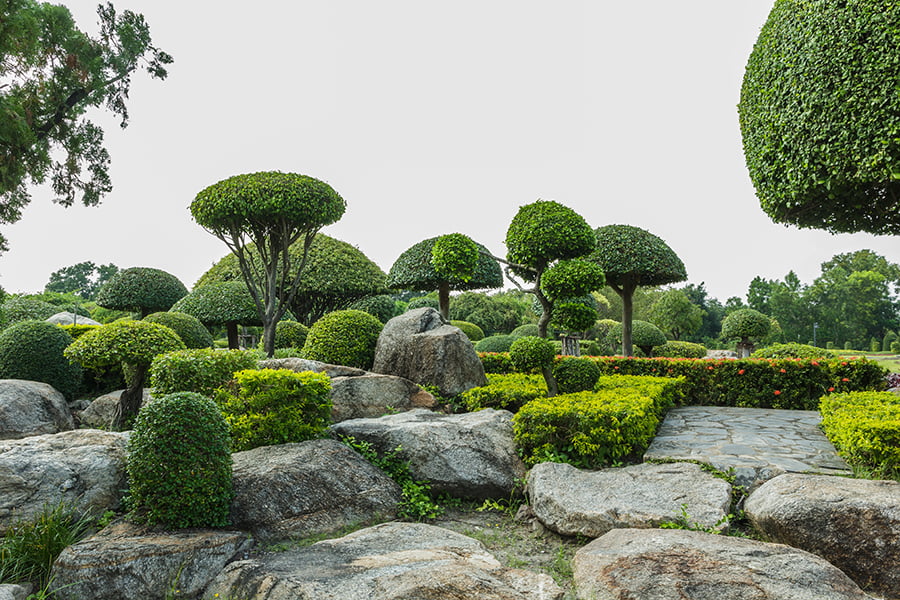
They provide an attractive and low-maintenance way to add texture, color, and interest to the landscape. Rock gardens can be created using a variety of materials such as stones, boulders, gravels, and plants.
The rocks can be arranged in various patterns or designs to create visual appeal while also providing stability on the slope. Plants that thrive in rocky conditions such as succulents and alpine plants are ideal for rock gardens because they require little maintenance once established.
Adding mulch around the base of the rocks will help retain moisture and keep weeds at bay. With careful planning and design, rock gardens can transform a steep or sloping terrain into an attractive outdoor space with minimal effort!
Terraced Gardens
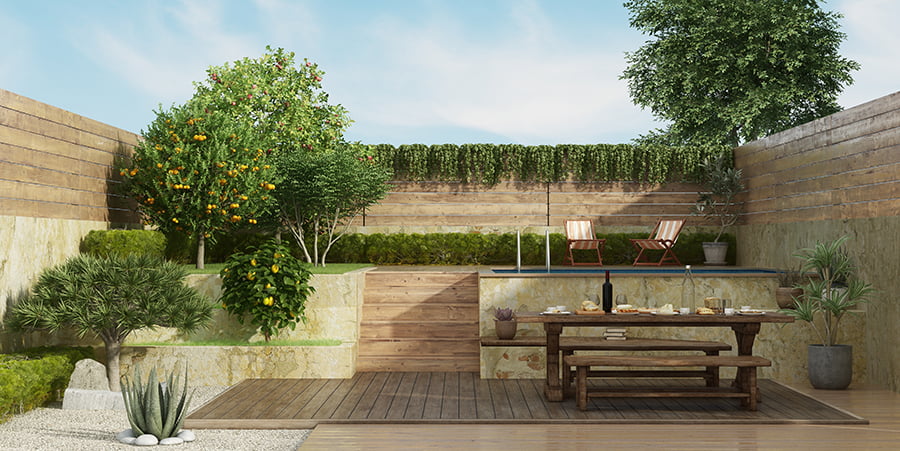
This landscaping technique involves creating multiple levels of garden beds, each one slightly higher than the last. The terraces can be made from stone, brick, wood, or other materials and can be used to create a variety of different looks.
Terraced gardens are ideal for growing plants that need more drainage or require more sun exposure as they can be built up in tiers to provide the necessary conditions for each plant type. Terraced gardens add visual interest and texture to any landscape design while also providing an opportunity for creative planting combinations.
Retaining Walls
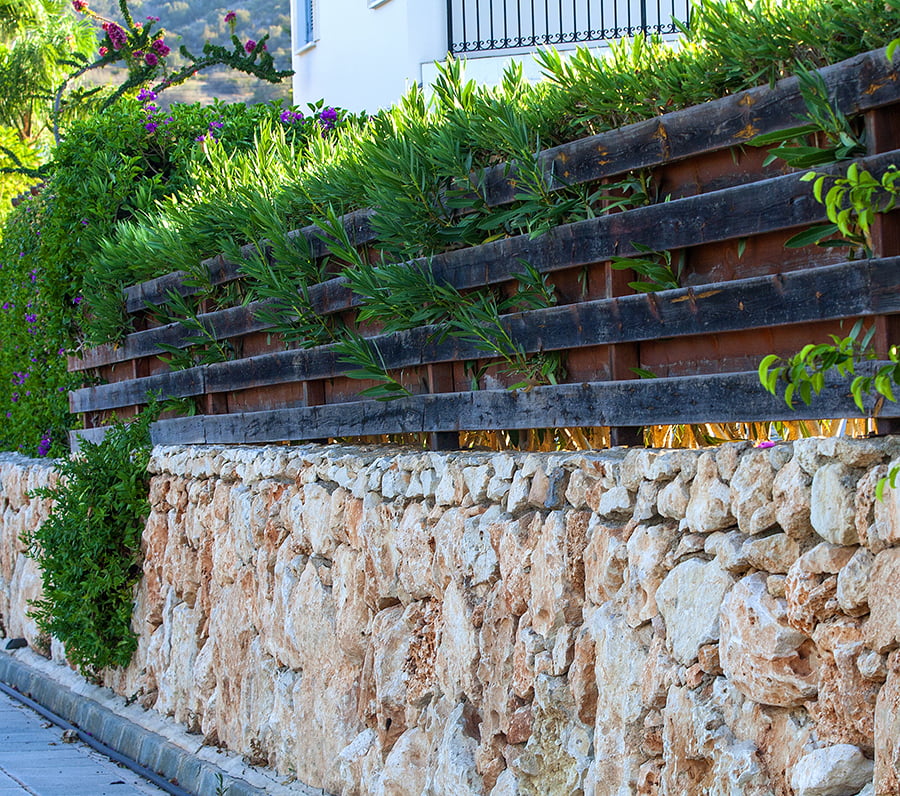
They provide stability and support to the soil, preventing it from eroding away due to gravity. Retaining walls can be made of a variety of materials such as stone, brick, wood, concrete blocks, and even metal.
Depending on the size and shape of the wall needed, different materials may be more suitable than others. For example, if a large wall is needed in order to hold back a lot of soil then concrete blocks may be best suited for this purpose.
On the other hand if a smaller wall is needed with more aesthetic appeal then stone or brick might work better. Additionally retaining walls can also help create usable space on sloped terrain by creating terraces that can be used for planting beds or seating areas.
Steps and Pathways
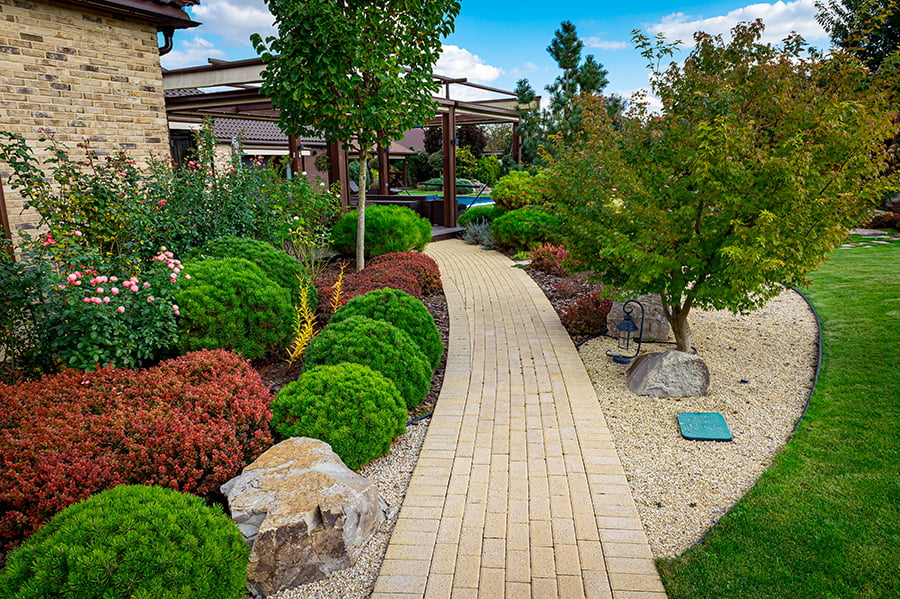
They provide a safe and attractive way to traverse the area, while also adding visual interest. Steps can be made from a variety of materials such as stone, brick, wood, or concrete.
Pathways can be constructed with gravel, mulch, pavers, or other materials that will not erode over time. When designing steps and pathways for steep terrain it is important to consider the grade of the slope so that they are easy to navigate without being too steep or slippery.
Steps should have enough space between them for comfortable footing and pathways should be wide enough for two people to walk side by side if desired.
Water Features

They can be used to create a focal point, provide sound, and even help with erosion control. Water features come in many shapes and sizes, from small bubbling fountains to large cascading waterfalls.
When designing a water feature for steep or sloping terrain, it is important to consider the size of the area available as well as the desired effect. For example, if you want a dramatic waterfall effect then you will need more space than if you were just looking for a small fountain or pond.
It is important to consider how much maintenance will be required when selecting your water feature; some require more upkeep than others. Make sure that any electrical components are installed correctly and safely so that they do not pose any risk of injury or damage due to improper installation on uneven ground.
Native Plants and Trees

These plants and trees are adapted to the local climate, soil, and environment, making them hardy and resilient in difficult conditions. Native species also require less maintenance than non-native varieties, as they are already accustomed to the local environment.
Native plants provide food sources for wildlife such as birds and butterflies that may not be available with non-native species. When selecting native plants for a steep or sloping terrain landscape design, it is important to consider their growth habits; some may need extra support when planted on a slope due to their shallow root systems.
It is also important to select appropriate plant varieties based on the amount of sunlight available in the area; some native species prefer full sun while others thrive in partial shade. Grouping similar types of native plants together can help create a cohesive look while providing habitat for wildlife at the same time.
Shrubs and Ground Coverings
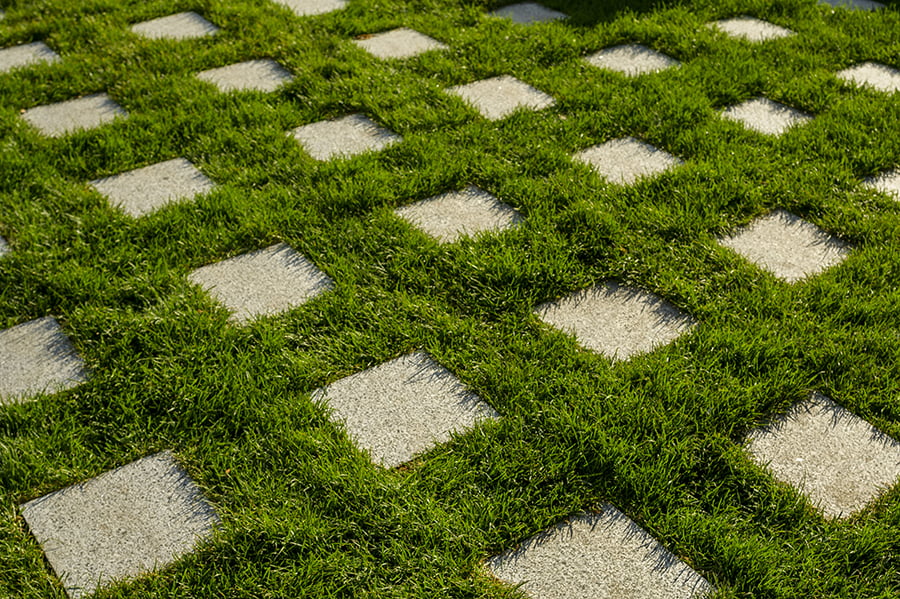
Shrubs provide a visual barrier, helping to define the space and create a sense of privacy. They also help to reduce soil erosion by trapping water runoff from higher elevations.
Ground coverings such as grasses, mosses, and wildflowers can be used to fill in any gaps between shrubs or other plants on the slope. These plants will help keep the soil in place while providing color and texture to the landscape.
They can act as a natural filter for pollutants that may run off from higher elevations into lower areas of your property.
Raised Beds or Planters for Planting Vegetables or Flowers
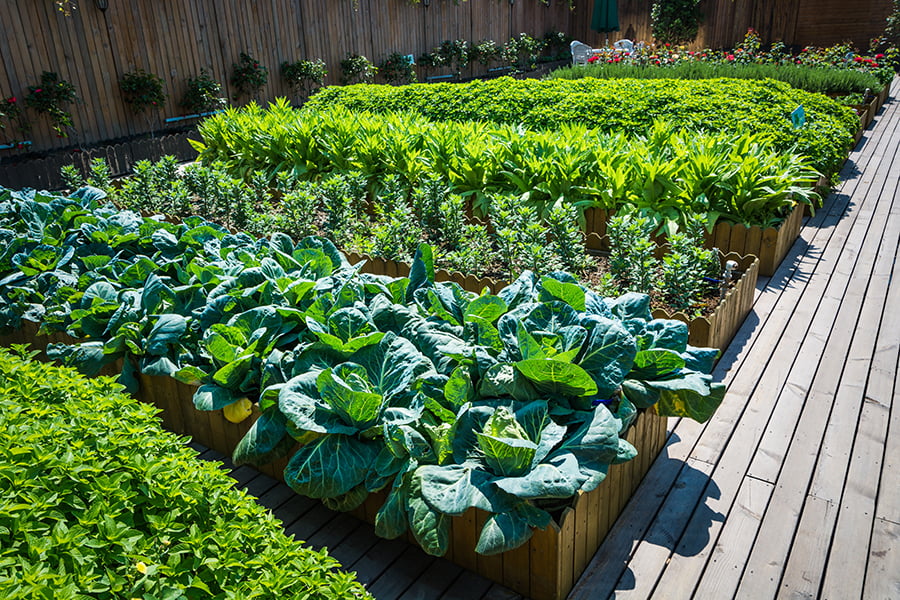
These structures provide an easy and effective way to plant vegetables, flowers, and other plants in areas that would otherwise be difficult to cultivate. Raised beds can be built from wood, stone, brick, metal, or any other material that is strong enough to hold soil and plants.
They can also come in various shapes and sizes depending on the needs of the gardener. Planters are similar but they are usually smaller than raised beds and made from plastic or ceramic materials.
Both raised beds and planters allow for better drainage of water which helps keep the soil moist while preventing erosion on sloped terrain. These structures make it easier for gardeners to access their plants without having to climb up a hillside every time they need something from their garden!